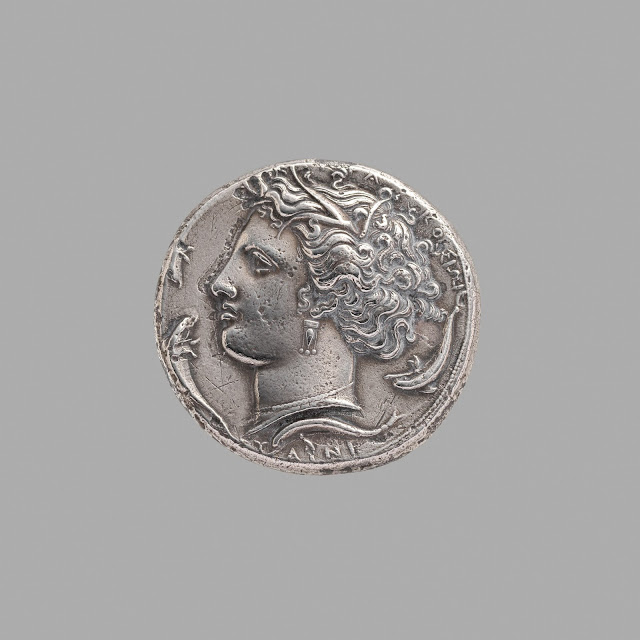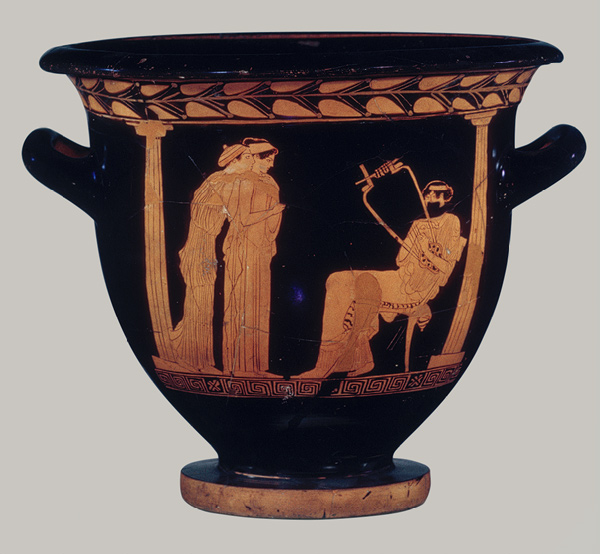Transformative myth of Arethusa

In Greek mythology, Arethusa, a Nereid, came across a clear stream and began bathing, not knowing it was the river god Alpheus, who flowed down from Arcadia through Elis to the sea. He fell in love during their encounter, but she fled after discovering his presence and intentions, as she wished to remain a chaste attendant of Artemis. After a long chase, she prayed to her goddess to ask for protection. Artemis hid her in a cloud, but Alpheus was persistent. Arethusa began to perspire profusely from fear, and soon transformed into a stream. Artemis then broke the ground allowing Arethusa another attempt to flee. Her stream traveled under the sea to the island of Ortygia, in the center of ancient Syracuse where she emerged as a fountain. But Alpheus flowed through the sea to reach her and mingle with her waters. Syracusan coins featuring her portrait are considered among the most beautiful in ancient Greece. Beautiful Syracusan silver dekadrachm signed by Euainetos, with...







